
Roots
The whisper of leaves in ancient forests, the murmur of forgotten songs, and the rhythmic beat of hands caring for strands tell a tale far older than our modern mirrors. Within each curl, each coil, each gentle wave, a living memory resides. This memory speaks not only of individual beauty but also of communal strength, of practices passed down through generations, and of a profound connection to the very earth beneath our feet. For those with textured hair, this connection runs particularly deep, a heritage woven into the very structure of their being.
We often seek new solutions, chasing fleeting trends, yet perhaps the answers we truly desire lie not in what is novel, but in what has always been. Could the wisdom of our ancestors, once dismissed or overlooked, hold keys to contemporary hair wellness? This exploration begins at the very source, delving into the fundamental understanding of textured hair itself, a journey to the heart of its unique character.

Hair Anatomy and Physiology Specific to Textured Hair
The human hair strand, a deceptively simple filament, harbors an astonishing complexity, particularly so for textured varieties. At its core, each hair is a protein filament, primarily composed of keratin. This fibrous protein forms the bulk of the hair shaft, lending it strength and resilience. The hair shaft itself comprises three layers ❉ the cuticle, cortex, and medulla.
The outermost layer, the Cuticle, consists of overlapping scales, much like shingles on a roof. The way these scales lie, or lift, directly impacts the hair’s porosity – its capacity to absorb and retain moisture and chemical treatments. Beneath the cuticle lies the Cortex, which gives hair its elasticity and strength, also housing melanin, the pigment responsible for natural hair color. The innermost layer, the medulla, is the disordered center of the hair shaft, influencing light absorption and, thus, hair color.
For textured hair, the follicular structure plays a particularly significant role in determining its characteristic curl patterns. Unlike straighter hair, which typically emerges from more circular follicles, highly curly hair springs from more elongated, oval-shaped follicles. This distinct follicular shape contributes to the hair strand’s tendency to coil, kink, or wave. The curvature of the follicle dictates the hair’s path as it grows, leading to varying degrees of tightness in the curl.
This inherent structure also influences how natural oils, or sebum, produced by the scalp, travel down the hair shaft. With tighter coils, the limited movement of these oils along the spiraled strands often results in dryness and flakiness, conditions sometimes mistaken for dandruff. A profound understanding of these anatomical differences is not merely academic; it informs every aspect of proper care, from cleansing to conditioning.

Textured Hair Classification Systems
Classifying textured hair extends beyond simple observation; it seeks to categorize the diverse spectrum of curl patterns, aiding in targeted care and product selection. While no single system is universally perfect, various models attempt to provide a framework for understanding the nuances of textured strands. The most widely recognized system categorizes hair into types 1 (straight), 2 (wavy), 3 (curly), and 4 (coily), with further sub-classifications (A, B, C) based on the tightness of the curl or coil pattern.
- Type 2 Hair ❉ Ranges from loose waves (2A) to more defined S-shaped waves (2B and 2C) that can be prone to frizz.
- Type 3 Hair ❉ Includes distinct curls, from loose spirals (3A) to springy, tight curls (3B and 3C), often possessing considerable volume.
- Type 4 Hair ❉ Characterized by tight coils, from fine and delicate (4A) to dense, zig-zag patterns (4B and 4C), known for significant shrinkage.
This classification offers a helpful starting point, yet it is essential to remember that individual hair can exhibit multiple patterns across the head. A single head of hair might possess a blend of 3C and 4A sections, requiring a tailored approach rather than a rigid adherence to one category. Recognizing this internal diversity within one’s own hair is a step toward truly personalized care.
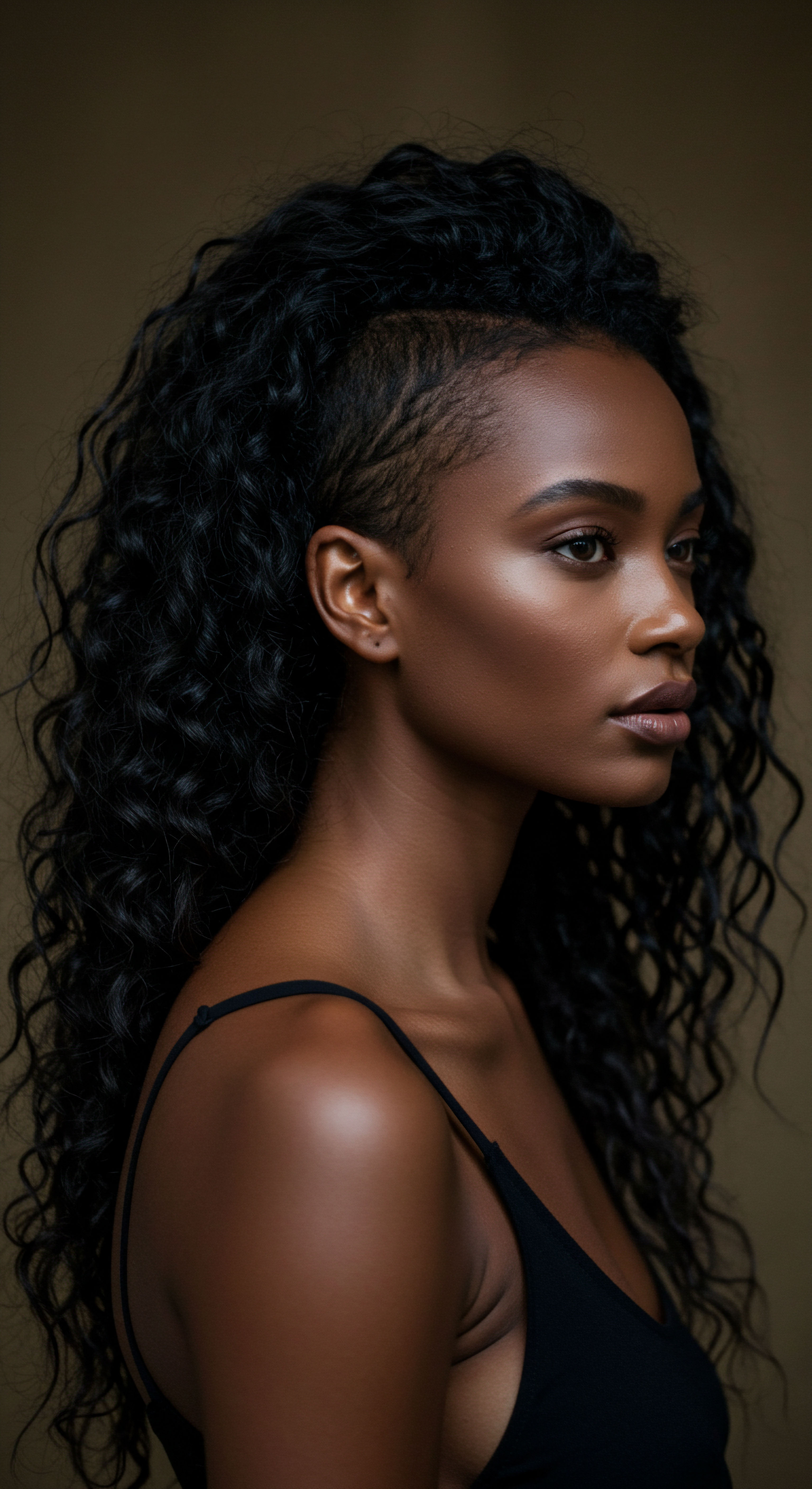
The Essential Lexicon of Textured Hair
A shared language helps us understand and discuss textured hair with precision and respect. Certain terms have gained prominence in the discourse around textured hair care, moving beyond simple descriptions to convey specific properties and needs.
Consider Porosity, a term that describes the hair’s ability to absorb and retain moisture. Hair with high porosity has a more open cuticle layer, allowing moisture to enter and leave quickly. Low porosity hair, conversely, has a tightly closed cuticle, making it resistant to moisture absorption but excellent at retaining it once absorbed. Understanding one’s hair porosity guides the selection of products and application techniques.
Another significant concept is Shrinkage, a characteristic often observed in highly coiled hair. This refers to the apparent reduction in hair length when wet, as the coils compress. While it might seem a challenge, shrinkage is a sign of healthy elasticity, indicating the hair’s ability to stretch and return to its natural state. Acknowledging and working with shrinkage, rather than against it, allows for healthier hair practices.
Understanding the inherent qualities of textured hair, from its unique follicular structure to its diverse curl patterns and responses to moisture, forms the foundation for effective care.

Hair Growth Cycles and Influencing Factors
Hair growth is a cyclical process, unfolding in distinct phases that influence the overall health and appearance of our strands. These phases, common to all hair types, are particularly relevant when considering the unique needs of textured hair.
- Anagen Phase ❉ This is the active growth phase, lasting from two to seven years. During this period, hair cells divide rapidly, leading to visible length.
- Catagen Phase ❉ A transitional phase, lasting about two to three weeks, where hair growth ceases and the follicle shrinks.
- Telogen Phase ❉ The resting phase, typically lasting around three months, during which old hair sheds and new hair begins to grow.
Several factors can influence these cycles and, consequently, the health of textured hair. Genetics play a primary role in determining hair texture, density, and growth potential. Beyond genetic predisposition, Nutrition stands as a critical element. A diet lacking essential vitamins and minerals can impede healthy hair growth and compromise strand integrity.
Similarly, Scalp Health provides the crucial environment for follicles to thrive; conditions such as inflammation or excessive product buildup can hinder growth. Environmental stressors, styling practices, and even hormonal fluctuations can also impact the hair growth cycle. Recognizing these influences allows for a holistic approach to nurturing textured hair from its very source.
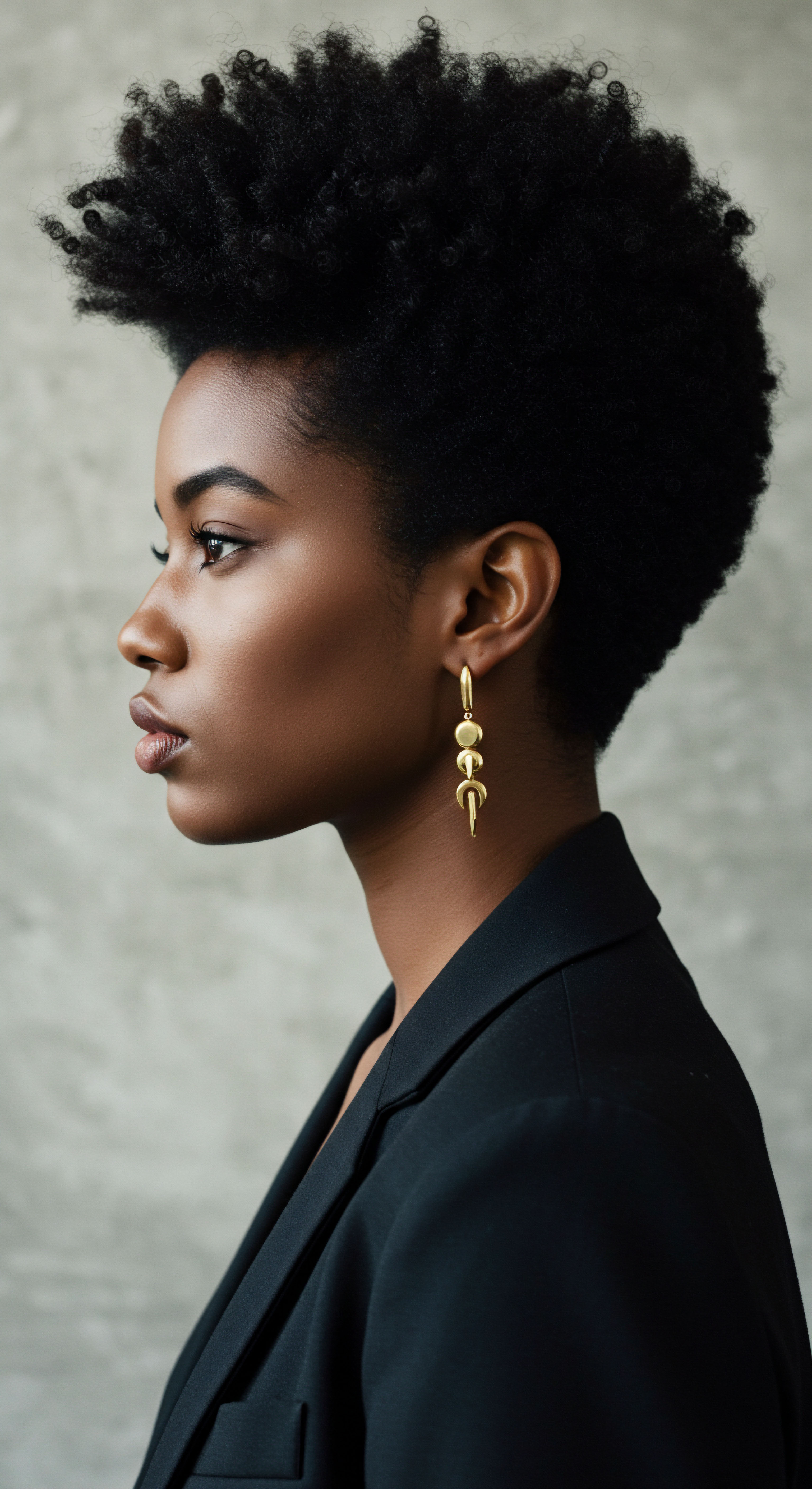
Ritual
As we turn from the foundational understanding of textured hair, a new horizon appears ❉ the realm of ritual. This is where knowledge transforms into practice, where the inherent qualities of our strands meet the mindful acts of care. The daily or weekly gestures we extend to our hair are more than mere routines; they are opportunities for connection, for nurturing, and for celebrating the unique beauty that blossoms from ancient roots. This section steps into that space, exploring how traditional practices, honed over centuries, can offer actionable wisdom for today’s textured hair journeys, guiding us toward techniques and tools that truly serve our strands.
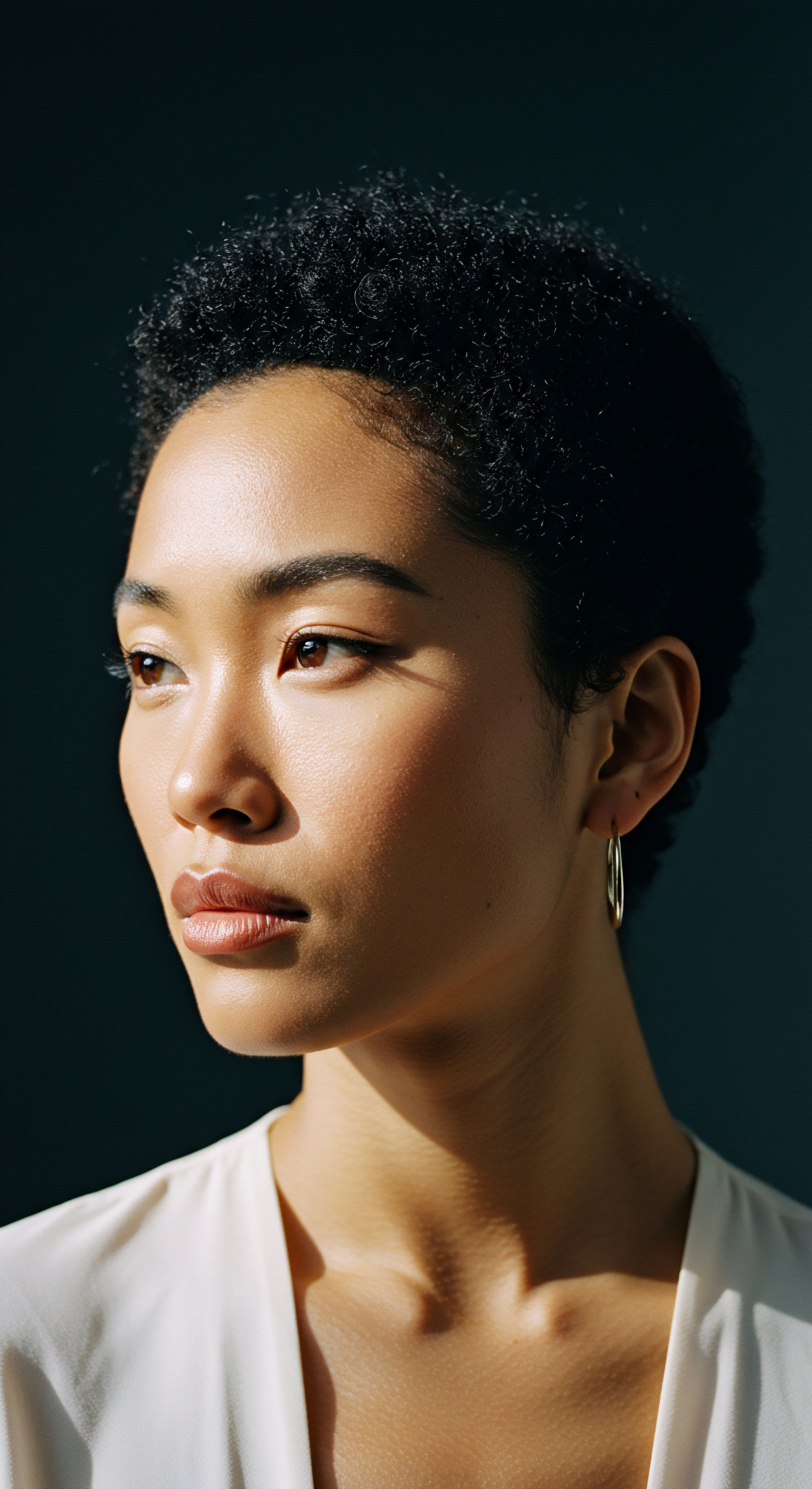
Protective Styling Encyclopedia
Protective styles, a cornerstone of textured hair care across many cultures, serve a dual purpose ❉ they shield delicate strands from environmental stressors and minimize manipulation, thereby promoting length retention. These styles, deeply rooted in historical practices, offer a timeless approach to hair health.
Consider Braids, a ubiquitous protective style with a rich history spanning millennia. In pre-colonial West Africa, intricate braiding patterns conveyed a wealth of information ❉ age, marital status, religious affiliation, wealth, and social rank. These were not merely aesthetic choices but visual languages. Today, styles like Box Braids, Cornrows, and Kinky Twists continue this legacy, offering versatility while keeping ends tucked away.
The key lies in avoiding excessive tension at the scalp, a modern concern that can lead to traction alopecia. Gentle installation and regular moisturizing of the scalp and strands remain paramount.
Another ancient practice finding modern resonance is Hair Threading. Among the Yoruba people of Nigeria, “Irun Kiko” has been noted since the 15th century as a method to stretch hair and retain length, protecting it from breakage. This technique, which involves wrapping hair with thread, provides a heat-free way to elongate curls and reduce tangling.
Similarly, Bantu Knots, named for the Bantu-speaking people of Southern Africa, offer a styling option that can define curls and protect ends. These historical methods remind us that innovative, protective solutions often stem from enduring cultural practices.

Natural Styling and Definition Techniques
Celebrating natural texture involves techniques that enhance curl definition and vibrancy without resorting to harsh alterations. Many of these methods echo the gentle approaches of past generations, focusing on hydration and mindful manipulation.
The Wash and Go, a seemingly simple modern term, reflects an underlying philosophy of allowing natural curl patterns to air dry and set. This approach, while appearing minimal, relies heavily on thorough cleansing and conditioning, followed by the application of products that support curl clumping and moisture retention. Proper detangling, often performed on wet hair with a wide-tooth comb or fingers, is crucial to prevent breakage and maintain curl integrity.
For enhanced definition, techniques like Finger Coiling or Shingling can be employed. These involve individually shaping curls with fingers, allowing for greater control over the final look. The careful application of leave-in conditioners, curl creams, and gels ensures that the defined pattern holds, minimizing frizz while maximizing shine. These practices, though refined by modern products, align with the historical appreciation for well-groomed, distinct hair patterns seen in many African communities, where dense and clean hair was admired.
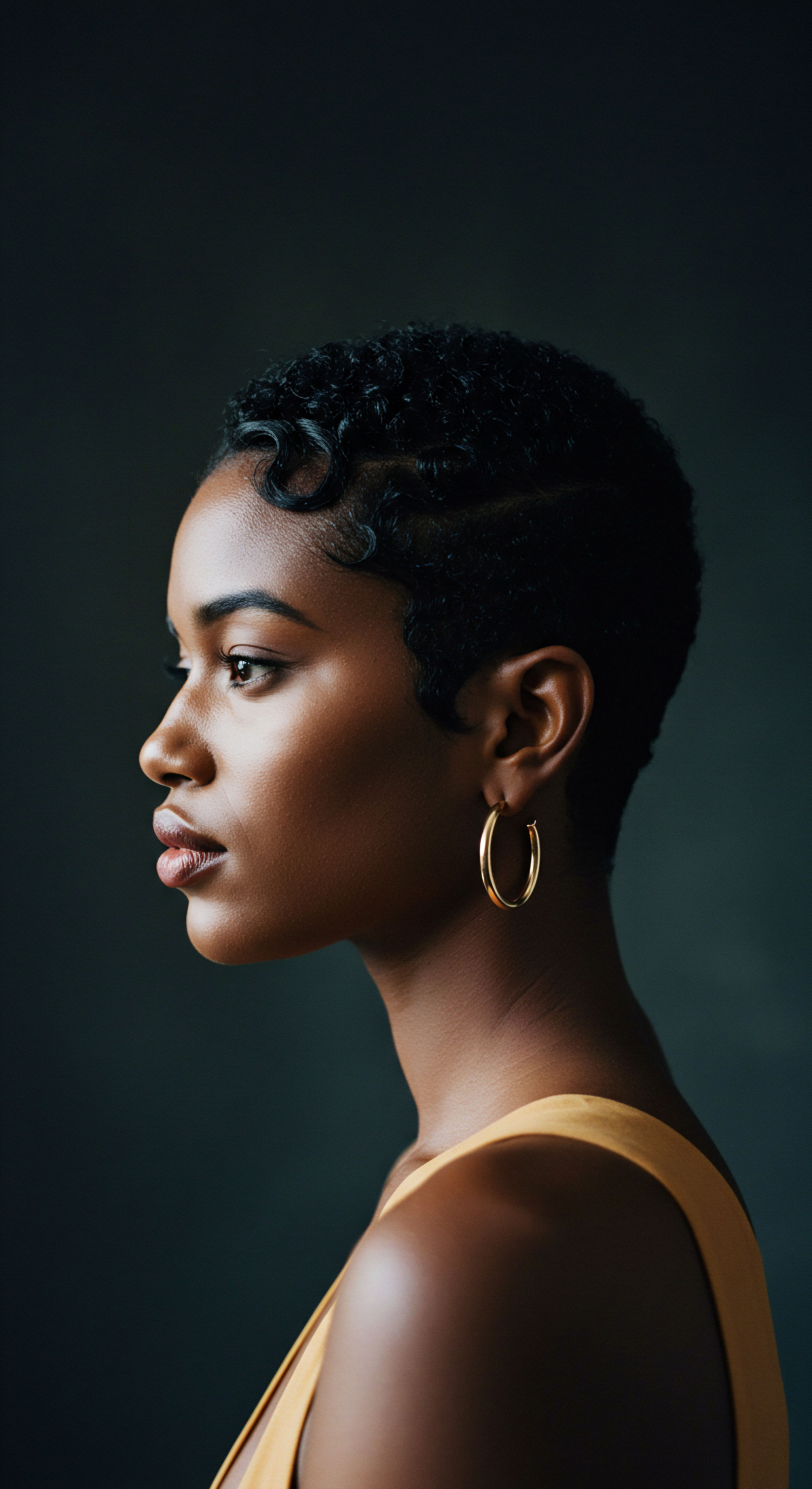
Wigs and Hair Extensions Mastery
The use of wigs and hair extensions, often viewed as contemporary styling choices, possesses a lineage stretching back to antiquity. In ancient Egypt, for instance, wigs were not only aesthetic adornments but also indicators of social rank, often crafted from human hair, plant fibers, or wool and stiffened with beeswax. They offered protection from the harsh sun and helped manage hair, particularly for those with thinning strands. Priests even shaved their heads for ritual purity, wearing wigs as needed.
Today, wigs and extensions continue to serve multiple purposes for textured hair wearers:
- Protective Function ❉ They shield natural hair from environmental damage, over-manipulation, and heat styling, allowing it to rest and grow.
- Versatility ❉ They offer the freedom to experiment with different lengths, colors, and textures without altering one’s natural hair.
- Convenience ❉ They can reduce daily styling time, providing a ready-to-wear option for busy individuals.
Mastering their use involves proper installation to avoid tension on the scalp, regular cleansing of both the natural hair underneath and the extensions themselves, and appropriate removal to prevent damage. Christina Jenkins’ invention of the hair weaving process in the 1950s significantly improved the security and longevity of extensions, building upon centuries of similar concepts.

Heat Styling and Thermal Reconditioning with a Safety-First Approach
The application of heat to textured hair, while offering temporary straightness or defined waves, carries inherent risks. A safety-first approach is not merely a modern recommendation; it echoes an intuitive understanding of hair’s vulnerability that existed in earlier times, even if the tools were different. The practice of straightening Afro-ethnic hair reportedly began during the slavery period, with enslaved Black women using hot irons. This historical context underscores a long-standing desire for versatility, but also highlights the potential for damage when not approached with care.
Modern thermal reconditioning, through flat irons or blow dryers, requires precise temperature control and the use of heat protectants. Excessive heat can alter the hair’s protein structure, leading to irreversible damage.
| Aspect Temperature Control |
| Contemporary Wisdom Use lowest effective heat setting, specialized tools. |
| Ancient Echoes Intuitive understanding of material limits (e.g. hot stones, but not scorching). |
| Aspect Protective Barrier |
| Contemporary Wisdom Apply heat protectant sprays/serums. |
| Ancient Echoes Application of natural oils (shea butter, plant oils) before styling. |
| Aspect Frequency |
| Contemporary Wisdom Limit heat application to minimize cumulative damage. |
| Ancient Echoes Preference for long-lasting, low-manipulation styles. |
| Aspect Modern tools offer precision, yet the principle of protecting hair from harsh elements remains a constant. |
The evolution of chemical straighteners, from early harsh formulations to the hot comb developed by Madam C.J. Walker in the early 20th century, and later chemical relaxers, also speaks to this quest for altered texture. However, these processes, especially earlier versions, could cause severe breakage and scalp burns. This history reinforces the necessity of prioritizing hair health above all else, drawing lessons from past attempts to manipulate texture.

The Complete Textured Hair Toolkit
A thoughtful selection of tools can significantly enhance the care and styling of textured hair, moving beyond simple combs to specialized instruments designed for specific needs.
The Wide-Tooth Comb and Detangling Brush stand as indispensable items, minimizing breakage during the detangling process, particularly when hair is wet and most vulnerable. Unlike fine-tooth combs that can snag and pull, these tools glide through coils, separating strands gently.
For drying, a Microfiber Towel or an old t-shirt reduces friction and absorbs excess water without disturbing the curl pattern or causing frizz, a gentler alternative to rough terrycloth. Diffusers, attachments for blow dryers, distribute heat evenly and gently, preserving curl definition during drying.
Practical applications of care, informed by ancient practices and adapted with modern understanding, define the daily experience of textured hair.
Accessories like Satin or Silk Scarves and Bonnets are crucial for nighttime protection, preserving styles and preventing moisture loss. This practice echoes ancient traditions where head coverings were used for protection, warmth, and symbolic reasons. Even specialized tools like hair threading needles or styling clips, though modernized, derive their utility from the fundamental needs of textured hair – to be manipulated, defined, and protected with care.

Relay
Beyond the surface of routine and the mechanics of styling, a deeper conversation awaits. This “Relay” section beckons us into the intricate interplay of science, culture, and individual well-being, inviting a profound contemplation of how ancient hair care traditions can truly inform contemporary wisdom for textured hair. This is not a simple transfer of old ways to new contexts; rather, it is a sophisticated dialogue, one that unearths the enduring principles behind historical practices and examines their scientific validity and cultural resonance in our present moment. Here, we move beyond mere technique to understand the ‘why’ behind what we do, supported by scholarly insight and real-world data.

Building Personalized Textured Hair Regimens
Crafting a personalized hair regimen is a contemporary ideal, yet its underlying principles find a striking parallel in the bespoke approaches of ancient communities. These communities understood that hair, like individuals, possesses unique characteristics influenced by environment, diet, and lifestyle. A rigid, one-size-fits-all approach to hair care often fails, leading to frustration and damage. Instead, a regimen tailored to individual hair porosity, density, and curl pattern yields far superior results.
The process begins with careful observation ❉ how does your hair respond to moisture? How quickly does it dry? What is its inherent strength?
This observational method mirrors the empirical knowledge passed down through generations, where understanding one’s specific hair type was a matter of lived experience and shared wisdom. A personalized regimen typically involves:
- Cleansing ❉ Selecting a cleanser that effectively removes buildup without stripping natural oils. Ancient practices often utilized natural clays or saponifying plants, which cleansed gently.
- Conditioning ❉ Providing ample moisture and detangling assistance. Traditional oils and butters served as potent conditioners.
- Styling and Protection ❉ Choosing methods and products that support desired styles while minimizing damage.
This adaptability, recognizing the variability of textured hair, is a powerful lesson from the past.
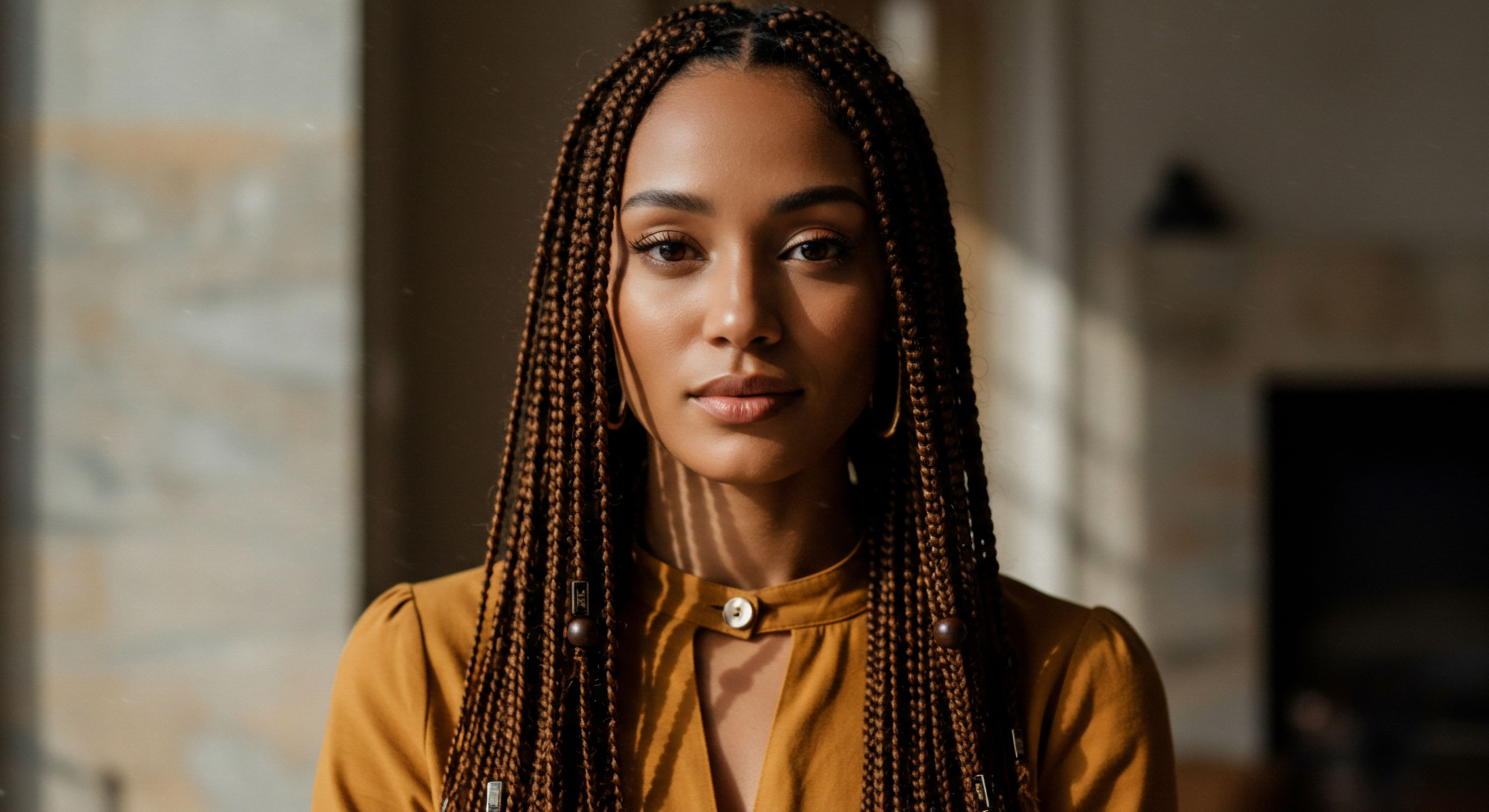
The Nighttime Sanctuary ❉ Essential Sleep Protection and Bonnet Wisdom
The ritual of nighttime hair protection, often embodied by the humble bonnet or silk scarf, is a testament to practical wisdom refined over centuries. This practice is far from a modern invention; historical evidence suggests the use of head coverings for hair preservation and protection in various ancient cultures. The dry Egyptian climate, for instance, led to the use of wigs and head coverings not only for status but also for practical hair management and protection from the elements.
For textured hair, the significance of sleep protection is profound. Cotton pillowcases, with their absorbent fibers, can strip hair of essential moisture and create friction, leading to tangles, frizz, and breakage. A Satin or Silk Bonnet, scarf, or pillowcase provides a smooth, low-friction surface, allowing hair to glide without snagging. This simple act:
- Preserves Moisture ❉ It prevents the hair’s natural oils and applied products from being absorbed by bedding.
- Reduces Friction ❉ It minimizes tangling and breakage that can occur from tossing and turning during sleep.
- Maintains Style ❉ It helps prolong the life of hairstyles, reducing the need for daily manipulation.
This enduring practice, from ancient head wraps to modern bonnets, highlights a consistent understanding of hair’s fragility and the importance of creating a protective environment, even during rest.

Ingredient Deep Dives for Textured Hair Needs
Ancient traditions relied on local botanicals and natural substances for hair care, a practice now being validated by scientific inquiry. A deep dive into these ingredients reveals their potential to address the specific needs of textured hair, particularly its propensity for dryness and fragility.
Consider Shea Butter (Vitellaria paradoxa), a staple in West African communities for centuries. Ethnobotanical studies from regions like Epe in Lagos State, Nigeria, confirm its traditional use for healthy and long hair. Shea butter, rich in fatty acids and vitamins, offers exceptional moisturizing and conditioning properties, sealing moisture into the hair shaft and providing a protective barrier. This aligns with the understanding that afro-textured hair, due to its coiled structure, struggles to distribute natural sebum from root to tip, making external moisturization crucial.
Another compelling example is Rhassoul Clay from Morocco. Traditionally used as a mud wash, it cleanses hair and scalp without stripping beneficial properties. Scientific research is increasingly exploring the benefits of clays for gentle cleansing and mineral supply.
However, a critical perspective is necessary. While many traditional ingredients offer genuine benefits, not all ancient remedies are scientifically validated or universally safe for modern application. For instance, some traditional practices involved ingredients that, while historically used, may not align with contemporary understanding of hair and scalp health. The emphasis today is on understanding the chemical composition and physiological effects of these natural substances.
A study on the cosmetopoeia of African plants for hair treatment identified 68 plant species traditionally used for conditions like alopecia, dandruff, lice, and tinea. Remarkably, 58 of these species also showed potential as antidiabetic treatments when taken orally. This intriguing correlation suggests a deeper, systemic connection between overall health and hair wellness, a holistic view often present in ancient healing systems.
This particular research points to plants like those from the Lamiaceae, Fabaceae, and Asteraceae families as most represented in African hair care, with leaves being the most commonly used part. This connection between topical application for hair and systemic health offers a compelling, if still nascent, area of contemporary scientific exploration, hinting that some traditional hair remedies might have contributed to general well-being in ways not immediately obvious.
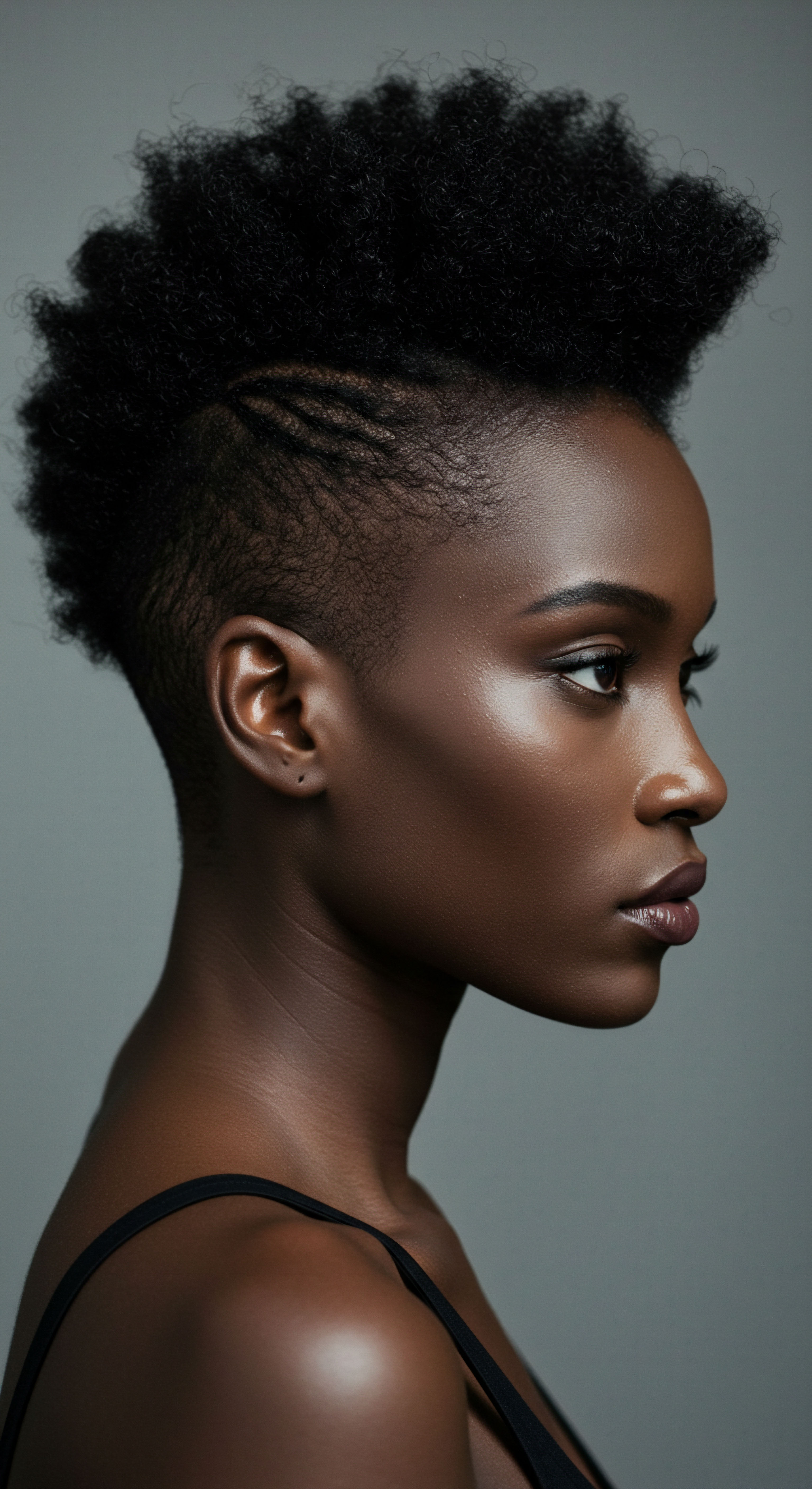
Textured Hair Problem Solving Compendium
Addressing common textured hair concerns requires a blend of scientific understanding and patient, consistent care, often drawing from principles present in ancient problem-solving.
Dryness, a pervasive issue, stems from the hair’s structure and its challenge in retaining moisture. Ancient solutions centered on regular application of natural oils and butters. Modern wisdom adds layering techniques (liquid, cream, oil – LCO method) and humectants to draw moisture from the air.
Breakage, often a consequence of dryness, over-manipulation, or improper styling, was mitigated in ancient times by protective styles and gentle handling. Contemporary understanding highlights the importance of protein-moisture balance, deep conditioning, and minimizing friction.
Traction Alopecia, hair loss caused by excessive pulling on the hair follicles, is a stark reminder that even beneficial styles can be harmful if applied incorrectly. While ancient cultures practiced tight braiding for various reasons, the long-term dermatological consequences were not always understood or documented in the same way modern science does. Contemporary research highlights the prevalence of traction alopecia, particularly among African American women, due to common styling practices that exert constant tension on the pilosebaceous follicle.
This underscores the need for careful installation of braids and other protective styles, ensuring tension is minimized at the scalp. This scientific insight complements the ancient aesthetic preference for certain styles, urging us to adapt practices for long-term scalp health.

Holistic Influences on Hair Health
Hair health is not an isolated phenomenon; it is deeply interconnected with overall bodily well-being, a truth recognized implicitly by many ancient traditions. The concept of hair as a reflection of internal balance resonates through historical practices.
Diet and Nutrition ❉ Ancient diets, often rich in whole foods, fresh produce, and lean proteins, inadvertently provided the necessary building blocks for healthy hair. Modern nutritional science confirms the impact of deficiencies in vitamins (like A and E, found in traditional African black soap), minerals (iron, zinc), and proteins on hair growth and strength.
Stress and Mental Well-Being ❉ The psychological impact of hair is profound. In ancient cultures, hair often symbolized identity, status, and connection to community. The act of grooming itself could be a communal, bonding experience.
Today, research points to the significant mental health toll of hair-based stigma and discrimination, leading to anxiety, negative self-image, and chronic stress. This connection underscores that caring for textured hair extends beyond physical products; it encompasses fostering self-acceptance and resilience in a world still grappling with Eurocentric beauty standards.
The enduring principles of protection, nourishment, and holistic well-being from ancient hair care traditions offer profound insights for contemporary textured hair practices.
Environmental Factors ❉ Ancient communities adapted their hair care to their local climates. In arid regions, moisturizing oils were crucial. In humid areas, practices to manage swelling might have differed. Today, understanding environmental stressors like UV radiation, pollution, and humidity allows for targeted protection, often drawing from the same natural ingredients that offered resilience in the past.

Reflection
As the sun sets on our exploration, a quiet understanding settles. The journey through ancient hair care traditions, interwoven with contemporary scientific insights, reveals not a simple return to the past, but a nuanced conversation across time. The whispers of our ancestors, their meticulous care for strands, their profound respect for hair as a symbol of identity and spirit, echo with compelling relevance today. We find that the true wisdom lies in discerning the enduring principles ❉ the gentle touch, the reliance on nature’s bounty, the deep connection between inner wellness and outer radiance.
Modern science provides the language to explain the ‘how,’ unraveling the mysteries of proteins and moisture, while ancient ways offer the ‘why,’ grounding our routines in cultural significance and a sense of belonging. The beauty of textured hair, in all its varied glory, becomes a living testament to this timeless exchange, a vibrant expression of heritage and health, perpetually blooming.
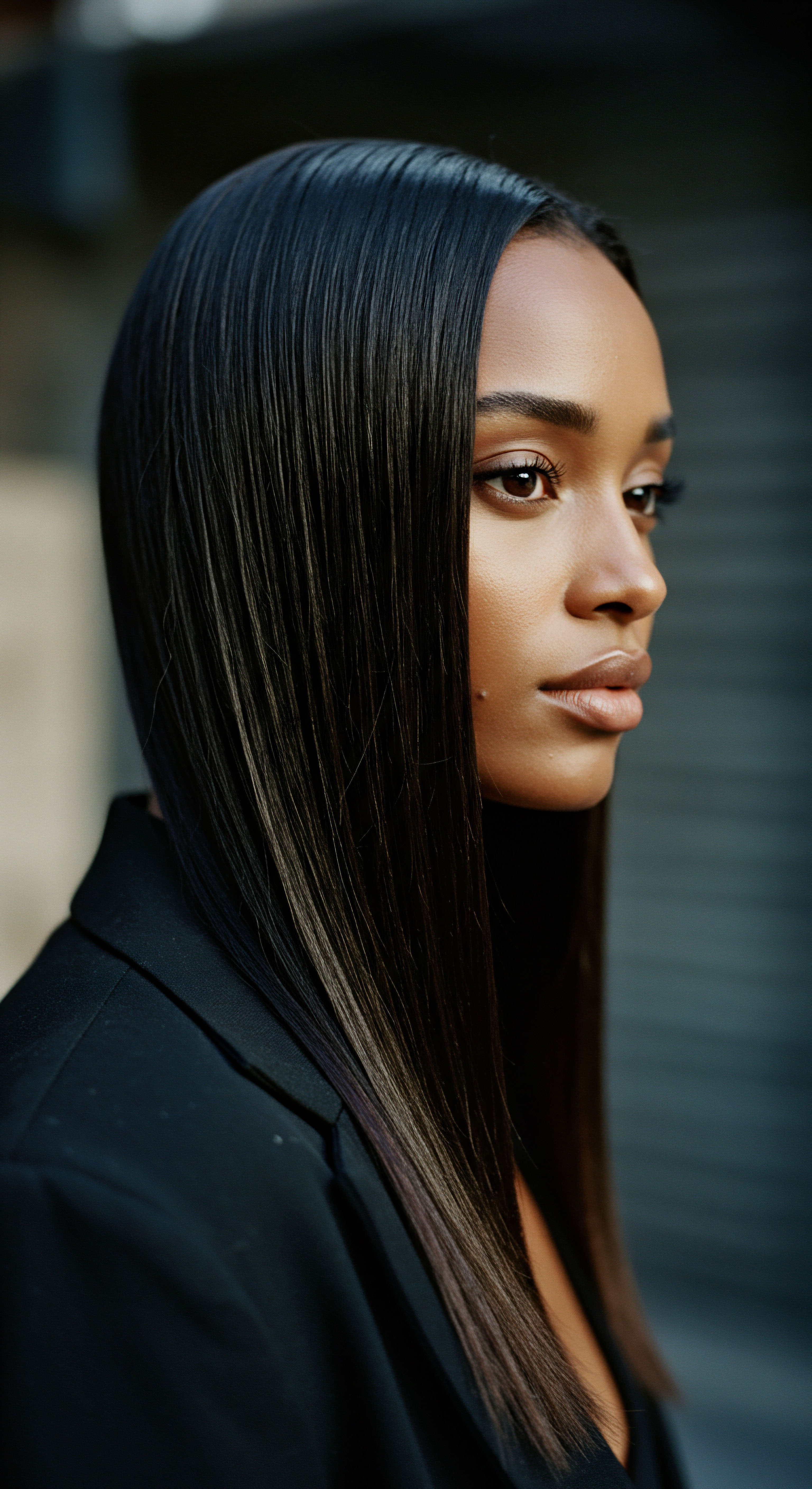
References
- Byrd, A. & Tharps, L. (2001). Hair Story ❉ Untangling the Roots of Black Hair in America. St. Martin’s Press.
- Dabiri, E. (2020). Twisted ❉ The Tangled History of Black Hair Culture. Harper Perennial.
- Davis-Sivasothy, A. (2011). The Science of Black Hair ❉ A Comprehensive Guide to Textured Hair Care. Saja Publishing Company.
- Jacobs-Huey, L. (2006). From the Kitchen to the Parlor ❉ Language and Becoming in African American Women’s Hair Care. Oxford University Press.
- Loussouarn, G. (2001). African Hair Growth Parameters. British Journal of Dermatology, 145(2), 294–297.
- Okereke, J. C. et al. (2007). Traction Alopecia in African American Women ❉ A Clinical and Histopathological Study. Journal of the American Academy of Dermatology, 57(3), 441-447.
- Robbins, C. R. (2012). Chemical and Physical Behavior of Human Hair. Springer.
- Tarlo, E. (2016). Entanglement ❉ The Secret Lives of Hair. Oneworld Publications.
- White-Jolivette, T. (2021). African American Women’s Experience of Wearing Natural Textured Hair. Walden University Research.
- Sharaibi, O. J. Oluwa, O. K. Omolokun, K. T. Ogbe, A. A. & Adebayo, O. A. (2024). Cosmetic Ethnobotany Used by Tribal Women in Epe Communities of Lagos State, Nigeria. Journal of Complementary Medicine & Alternative Healthcare, 12(4), 555845.
- Mouchane, M. Taybi, H. Gouitaa, N. & Assem, N. (2023). Ethnobotanical Survey of Medicinal Plants used in the Treatment and Care of Hair in Karia ba Mohamed (Northern Morocco). International Journal of Pharmaceutical Research & Allied Sciences, 12(1).
- Fletcher, J. (1995). Ancient Egyptian Hair and Hairstyles. University of Manchester.